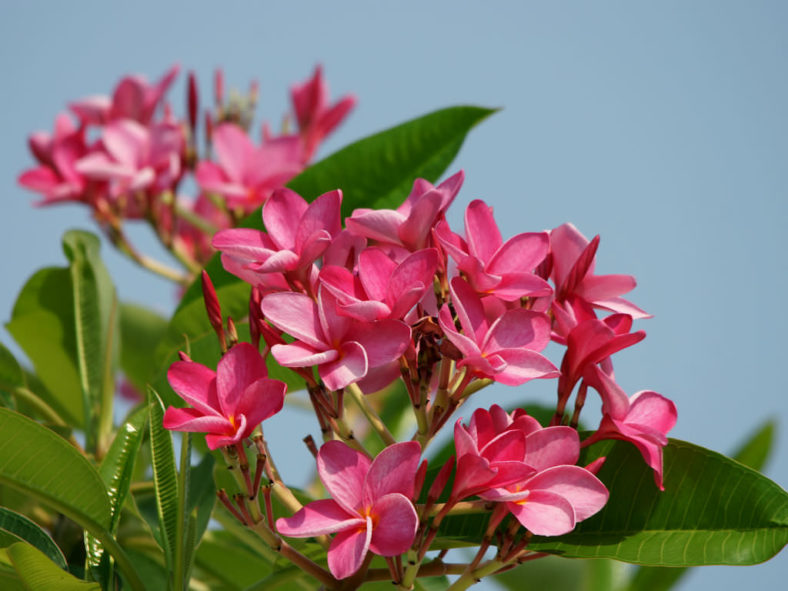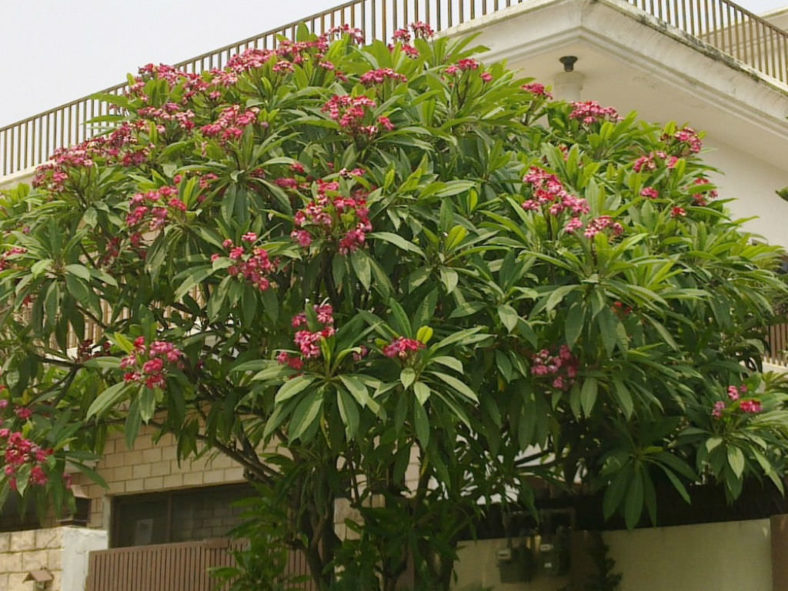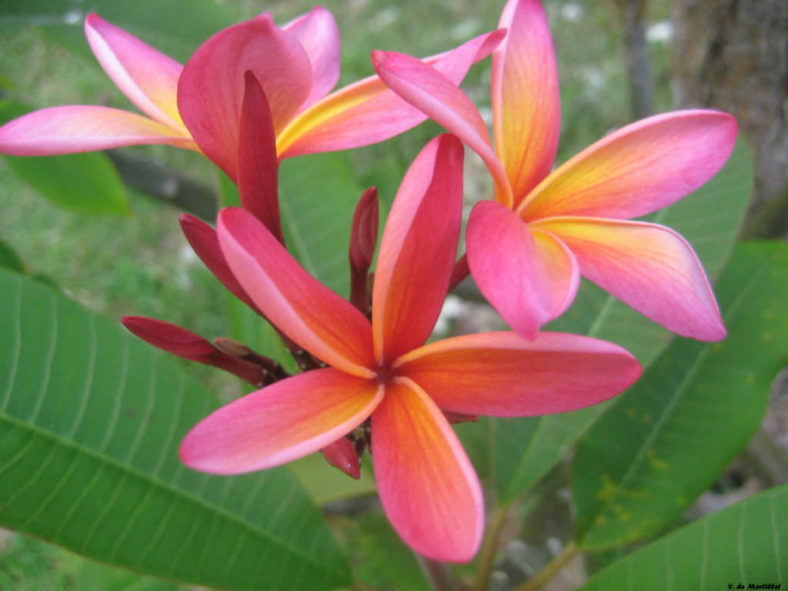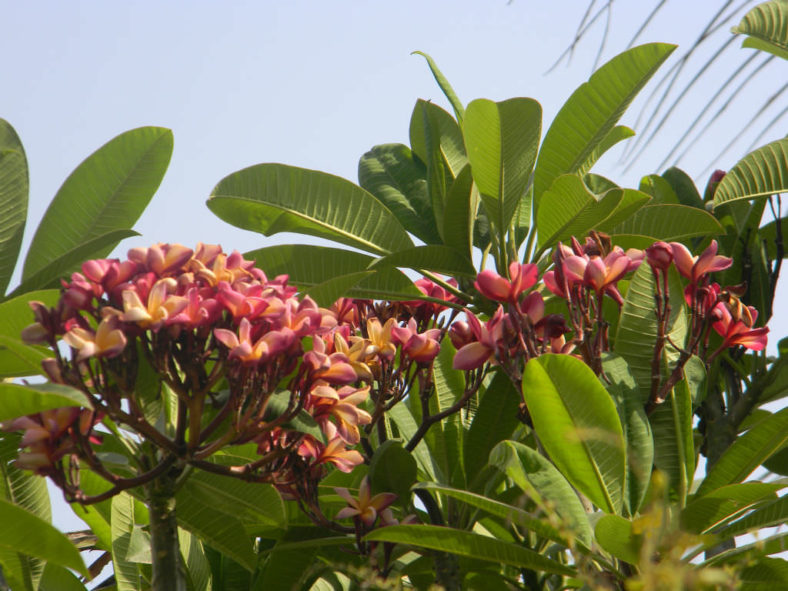Scientific Name
Plumeria rubra L.
Common Name(s)
Common Frangipani, Frangipani, Nosegay, Red Frangipani, Red Jasmine, Red Paucipan, Temple Tree
Synonym(s)
Plumeria aurantia, Plumeria gouanii, Plumeria northiana, Plumeria rubra f. rubra, Plumeria tenuifolia
Scientific Classification
Family: Apocynaceae
Subfamily: Rauvolfioideae
Tribe: Plumerieae
Genus: Plumeria
Origin
Plumeria rubra is native to Mexico.
Description
Plumeria rubra is a deciduous tree with upright branches crowded on a thick succulent trunk, forming a vase or umbrella shape with age. It can grow up to 25 feet (7.6 m) tall. The branches are glabrous, swollen, and leafy at the tips. They are somewhat brittle and, when broken, ooze a white latex. The leaves are green and arranged alternately in clusters at the end of the branches, measuring up to 20 inches (50 cm) long.
The terminal flowers have five petals and appear at the ends of the branches over the summer. The colors of the flowers range from pink to white, with shades of yellow in the center.

Hardiness
USDA hardiness zones 10a to 11b: from 30 °F (−1.1 °C) to 50 °F (+10 °C).
How to Grow and Care
Although you do not have to live in the tropics to grow Plumeria in your home garden, you should know its growing requirements beforehand.
Often grown in the garden as an ornamental shrub or small tree, these plants need to be grown in well-draining, slightly acidic soil. They also need at least 6 hours of full sun.
While the plants are pretty tolerant of salt and windy conditions, they are not tolerant of cold and must be protected. Therefore, they should be container-grown in colder regions. The plant can be dug up and overwintered indoors in areas that may be warm most of the time but still fairly prone to cold winters. Alternatively, you can sink container-grown Plumerias in the ground, bringing them indoors once the temperatures begin to drop in fall. Then, once warmer temps return in spring, you can return the plants outdoors.
Plumeria care, for the most part, is minimal. While Plumerias don't like wet feet, they should be watered deeply when irrigated and then allowed to dry out before watering again.
See more at How to Grow and Care for Plumeria.
Links
- Back to genus Plumeria
- Succupedia: Browse succulents by Scientific Name, Common Name, Genus, Family, USDA Hardiness Zone, Origin, or cacti by Genus
Photo Gallery
Click on a photo to see a larger version.



